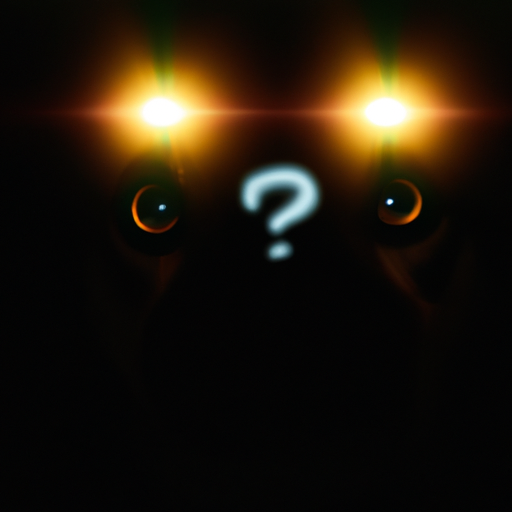Introduction
You’ve probably noticed that when you take photos of your beloved pet in low light, their eyes often glow in a captivating array of colors. This isn’t because your furry friend has superpowers (although we’d love to believe they do), but due to a unique structure in their eyes known as the tapetum lucidum.
Understanding the Tapetum Lucidum
The tapetum lucidum is a layer of tissue found behind a dog’s retina. This reflective structure acts as a mirror, bouncing light back through the retina and giving their eyes a unique glow.
- Purpose: Its primary function is to enhance night vision. By reflecting light back through the retina, it effectively doubles the amount of light available for the photoreceptors to capture.
- Color Variations: The color of the glow varies between individuals and can be yellow, green, blue, or white. The color of the tapetum itself and the pigmentation of the dog’s eye contribute to these variations.
| Dog Breed | Eye Glow Color |
|---|---|
| Labrador | Green/Yellow |
| Siberian Husky | Blue/White |
| Rottweiler | Yellow/Green |
Importance of Night Vision in Dogs
Your dog’s ancestors, like wolves, needed to hunt and protect themselves in low light conditions. That’s why the evolution has favored dogs with a reflective tapetum lucidum.
- Enhanced Perception: It allows dogs to see better in the dark than humans, giving them an advantage in early mornings and late evenings.
- Safety: It also plays a vital role in their safety, helping them avoid potential hazards in low light conditions.
Human Eyes vs. Dog Eyes
Unlike dogs, humans lack a tapetum lucidum, which is why we aren’t blessed with night vision capabilities. Instead, we have what is known as the pigment epithelium, which absorbs excess light and prevents it from reflecting back through our retina.
- This is why our eyes appear red in photographs taken with a flash. This “red-eye” effect is the result of light bouncing off the blood vessels at the back of our eyes.
Frequently Asked Questions
Q: Why do some dogs not have reflective eyes?
A: Some dogs may not have a functional tapetum lucidum, or it could be less reflective due to individual genetic variations.
Q: Can all animals see in the dark?
A: Not all animals have the same night vision capabilities. Predators like cats and dogs are usually better equipped for night vision than prey animals.
Q: Does age affect the reflectiveness of a dog’s eyes?
A: Yes, as dogs age, changes in their eyes can affect the color and brightness of the reflective glow.
While the reflective glow in your dog’s eyes is a fascinating phenomenon, it’s also a reminder of their incredible evolutionary journey. So, next time you’re out with your furry friend after dark, take a moment to appreciate their unique night vision superpower.



